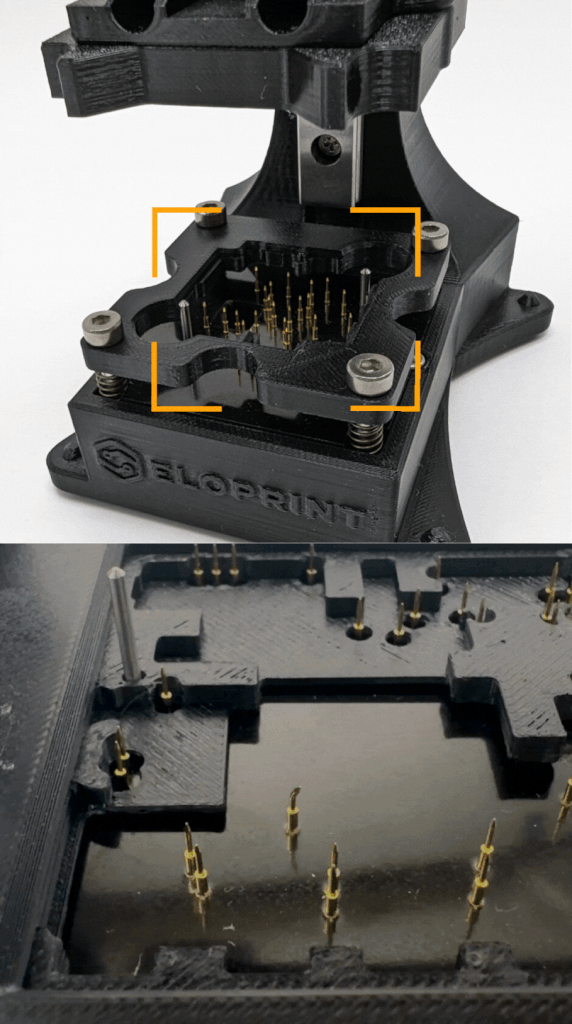Regularly replacing test needles is crucial for the reliability and accuracy of test fixtures. Wear and tear can cause the performance of the test needles to deteriorate over time, which can lead to incorrect test results. The typical service life of many types of needle is 100,000 cycles. However, the actual service life depends on many factors, so failure can occur much sooner or much later. To ensure consistently high quality, all needles should be replaced after a defined number of cycles. However, many of our customers also pursue the strategy of using the needles until abnormalities occur in the test process. In order to choose the right strategy, it is important to consider what effects high-resistance contacting would have on your test process.

Recommended procedure:
1. Identify test needles:
Locate the test needles to be replaced and document the type of needles for correct reinstallation.
2. Remove old test needles:
Use tweezers to carefully remove the old test needles from their sleeves. Be careful not to damage any sensitive components.
3. Insert new test needles:
Insert the new test needles precisely into the designated sleeves. Gently press the needles down with a setting tool to ensure that they are firm and correctly positioned. The setting tool should ideally be made of a material that is no harder than the needles to avoid damaging the tips.